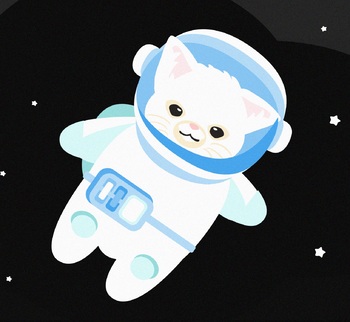Animals in Space in the Past, Present, and Future - Videos + Activities
Description
What pets have become astronauts? Is there a constellation of your favorite animal? Could there be alien animals out there? Learn about animals and their relationship with space in this fascinating blend of history and science.
This course explores a spectrum of animal-related astronomy - from the history of space travel, to the constellations, to the possibility of animal aliens somewhere in the universe! This class covers a myriad of interests - stories about animals, constellation mythology, space station science, and a discussion of what aliens might be like, all in one class!
▬▬▬▬▬▬ VIDEOS, ACTIVITIES, AND MORE ▬▬▬▬▬▬
- This course has four parts to it. Each “part” consists of downloadable video presentations hosted on Google Drive, along with some resources and project ideas to expand the students’ understanding.
- In a regular school setting, these materials are ideal for reverse instruction or a flipped classroom unit. For instance, you can assign the video recording to watch at home for homework, and then use the extension activities for class projects. The recordings also work well for sub days and much-needed sanity days!
- If you are using these materials in a home school setting, you could choose to do one part per day or one part per week, doing the projects as time allows. Feel free to have your child email me at lauren.rae.ard@gmail.com, if they have any questions or want to share what they’ve done with the materials.
- This unit also includes a link to my notes and Prezi presentation I use throughout the course, in case you want to give some of the presentation, or expand on the material yourself. Please keep in mind that the video may not match up exactly with the notes and lecture materials, because I do alter and add to my notes as time goes on. (For this particular unit, there are no notes for Part 1, as I used my extensive constellation knowledge to give the presentation without notes.)
▬▬▬▬▬▬ COURSE OUTLINE ▬▬▬▬▬▬
Part 1: Animal Constellations
Learn how to use a star wheel to identify constellations in the night sky of the northern hemisphere. (Parents of young children who cannot read the months of the year might need guidance with this part.) Explore the animal constellations and learn the fascinating stories behind the creatures that populate the heavens. Total recording length (split into 5 recordings): 88 minutes
Part 2: The History of Animals in Space
What animal was the first in space? The first around the moon? Learn about the history of space travel through the original animal astronauts, including monkeys, dogs, cats, and even tortoises! Recording length: 49 minutes
Part 3: Animal Astronauts in the Present Day
Scientists and astronauts are learning some amazing things about biology and space travel, with the help of ton of different animals, from frogs to spiders. We'll explore what it's like to live in space, whether you're a mouse, or a human. Recording length: 63 minutes
Part 4: Future Animal Astronauts
How might we use animals to explore space in the future? Could there be alien animals out there on other planets? We'll explore these questions in our last recording together. Recording Length: 45 minutes
▬▬▬▬▬▬ LEARNING OBJECTIVES ▬▬▬▬▬▬
By the end of the class, students should be able to:
♦ Know how to use a star wheel to locate constellations in the night sky.
♦ Recall some stories of animals from the constellation mythologies of several different cultures.
♦ Provide a basic outline of early space exploration for the United States and Russia (with a focus on animal explorers, of course!)
♦ Understand the motives behind sending animals into space during the Space Race.
♦ Explain the role of animals on the International Space Station.
♦ Compare and contrast the current animals in space (and their purpose) with the animals put into space in the 60s and 70s.
♦ Recall some of the discoveries made by studying the behavior of animals in space.
♦ Understand the ethical considerations when using animals for research in space.
♦ List the three "ingredients" required for life.
♦ Speculate on where we might find alien animals in our solar system and beyond.



